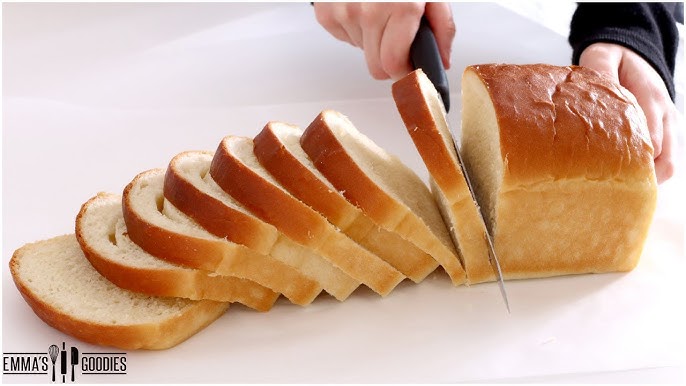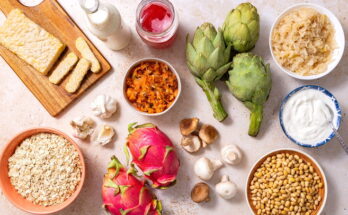Easy Bread Recipe: Have you ever dreamed of filling your home with the warm, comforting aroma of freshly baked bread? If so, you’re in for a treat! Making bread at home is simpler than it sounds, and the rewards are delicious.
Not only do you get a fresher, healthier loaf, but there’s also something incredibly satisfying about crafting bread from scratch. Whether you’re a beginner or looking to refine your technique, this guide will walk you through every step of the process.
Ingredients Needed for Homemade Bread
Basic Ingredients
To make a basic loaf of bread, you’ll need just a few ingredients:
- Flour: All-purpose or bread flour works best.
- Water: Warm, not hot—about 110°F.
- Yeast: Active dry yeast or instant yeast.
- Salt: For flavor and strengthening the dough.
- Sugar: Optional, but it helps activate the yeast and adds a touch of sweetness.
These staples are pantry-friendly and form the foundation of your bread.
Optional Add-ins
Want to get creative? Consider these add-ins:
- Herbs: Rosemary, thyme, or basil for an aromatic touch.
- Seeds: Sunflower seeds, sesame, or chia for added texture.
- Sweeteners: Honey or maple syrup for a unique flavor profile.
Essential Tools for Bread Baking
Common Kitchen Tools
No fancy gadgets are needed to bake bread. These everyday tools will do:
- Mixing bowls: Large enough to hold your rising dough.
- Measuring cups and spoons: Accuracy matters when baking!
- Wooden spoon: Perfect for mixing wet and dry ingredients.
Specialized Tools
If you’re ready to level up, consider investing in:
- Dough scraper: Handy for kneading and cleaning up sticky dough.
- Loaf pan: For shaping and baking sandwich loaves.
- Proofing basket (banneton): Helps your dough maintain its shape during proofing.
Step-by-Step Instructions for Making Easy Bread
Step 1: Preparing Your Workspace
Before you dive in, set yourself up for success by organizing your workspace.
- Clean your countertop: Dust it with a little flour to prevent sticking.
- Gather your tools and ingredients: Double-check that you have everything within arm’s reach.
- Create a comfortable environment: Bread dough rises best at warm, draft-free room temperatures.
Step 2: Mixing the Dough
The Right Ratios
Accurate measurements are key to a perfect loaf. A typical bread recipe calls for:
- 3 cups of flour
- 1 cup of warm water
- 1 packet of yeast (2 1/4 teaspoons)
- 1 teaspoon salt
- 1 tablespoon sugar
Use a kitchen scale for the best results, especially if experimenting with different flours.
How to Mix Dough Properly
- In a mixing bowl, combine the warm water, yeast, and sugar. Let it sit for 5-10 minutes until it becomes foamy—this proves the yeast is active.
- Gradually add the flour and salt while stirring with a wooden spoon.
- Mix until the dough begins to pull away from the sides of the bowl.
Step 3: Kneading the Dough
Why Kneading is Important
Kneading helps develop gluten, the protein that gives bread its structure and chewiness. This step ensures your bread isn’t too dense or crumbly.
Techniques for Kneading
- By hand: Transfer the dough to a floured surface and fold, press, and stretch it for about 8-10 minutes.
- Using a mixer: Attach the dough hook and knead on medium speed for about 5 minutes.
Look for a smooth, elastic texture that springs back when gently poked.
Step 4: First Rise (Proofing)
Once kneaded, the dough needs to rise. Place it in a greased bowl and cover it with a damp towel or plastic wrap.
- Let it rest for 1-2 hours in a warm spot.
- The dough should double in size. If you’re unsure, gently press it—if the indentation stays, it’s ready for the next step.
Step 5: Shaping the Dough
Punch down the dough to release excess air and transfer it to your floured surface. Shape it into a loaf or divide it into rolls. Tuck the seams underneath for a smooth top.
Step 6: Second Proofing
Once your dough is shaped, it’s time for the second proofing. This step ensures your bread is light and airy with a perfect crumb structure.
- Place the dough in its final shape: If using a loaf pan, carefully transfer the dough into the greased pan. For rolls, place them evenly spaced on a baking tray lined with parchment paper.
- Cover the dough: Use a clean kitchen towel or lightly greased plastic wrap to prevent drying.
- Let it rise again: Allow the dough to rest in a warm spot for 30-60 minutes. This second proofing allows the dough to expand further and enhances its flavor.
A good way to test readiness is the “poke test”: gently press the dough with your finger. If it springs back slowly, it’s ready to bake!
Step 7: Baking the Bread
Now comes the most exciting part—baking your bread to perfection. The smell alone will make the effort worthwhile!
Oven Temperature and Timing
- Preheat your oven: Set it to 375°F (190°C) for most bread recipes.
- Add steam (optional): Place a shallow pan of water in the oven to create steam. This helps form a crispy crust.
- Bake time: A standard loaf typically takes 25-30 minutes. Rolls may need just 15-20 minutes.
How to Know When It’s Done
- Visual cues: The bread should be golden brown on the outside.
- Sound test: Tap the bottom of the loaf; a hollow sound indicates it’s baked through.
- Temperature check: Use a kitchen thermometer to ensure the internal temperature is between 190°F and 200°F.
Cooling the Bread
Cooling your bread is a crucial step that shouldn’t be skipped:
- Place the bread on a wire rack: This prevents condensation and sogginess.
- Wait patiently: Allow the loaf to cool for at least 1-2 hours. Cutting into hot bread can ruin its texture.
While it’s tempting to slice into the bread right away, giving it time to cool ensures the crumb sets properly and the flavors develop.
Storing Your Bread
Homemade bread doesn’t have preservatives, so proper storage is key to maintaining freshness.
- Room temperature: Store bread in an airtight bag or bread box for up to 3-4 days.
- Freezing bread: Wrap the loaf tightly in plastic wrap and place it in a freezer bag. Bread can stay fresh in the freezer for up to 3 months.
- Reviving frozen bread: Reheat it in the oven at 350°F (175°C) for 10-15 minutes to restore its texture.
Common Bread-Baking Mistakes and How to Avoid Them
Baking bread can be an art, and mistakes happen. Here are some common pitfalls and how to fix them:
- Dense bread: Often caused by insufficient kneading or proofing. Ensure you knead the dough well and allow enough rising time.
- Dry crust: Cover the dough properly during proofing, and use steam in the oven for a softer crust.
- Overly sticky dough: Add flour gradually while kneading, but don’t overdo it—it’s better to have slightly sticky dough than overly dry.
Variations on the Basic Bread Recipe
Once you’ve mastered the basics, experiment with these fun variations:
- Whole Wheat Bread: Replace half or all of the all-purpose flour with whole wheat flour for a heartier, nuttier loaf.
- Sourdough Bread: Use a natural sourdough starter instead of commercial yeast for a tangy, chewy bread.
- Flavored Breads: Add garlic, cheese, olives, or dried fruits to customize your bread.
These variations are perfect for exploring new flavors and impressing friends and family.
FAQs about Easy Bread Recipe
1. What are the basic ingredients for an easy bread recipe?
The essential ingredients for making bread are flour, water, yeast, salt, and optionally sugar and oil. These form the foundation of most bread recipes and can be adjusted based on personal preferences.
2. Do I need a stand mixer to make bread?
No, a stand mixer is not necessary. You can knead bread dough by hand, which works just as well. A mixer simply makes the process quicker and less labor-intensive.
3. How long does it take to make bread?
Making bread typically takes 2–3 hours, including time for kneading, proofing (letting the dough rise), and baking. Some no-knead recipes may take longer due to extended resting times.
4. Can I use all-purpose flour instead of bread flour?
Yes, you can substitute all-purpose flour for bread flour. However, bread flour contains more protein, which gives bread a chewier texture and better structure.
5. How do I store homemade bread?
Store homemade bread in an airtight container or a bread bag at room temperature for up to 3 days. For longer storage, freeze the bread in slices or as a whole loaf.
6. Can I add extra ingredients to my bread dough?
Absolutely! You can add ingredients like herbs, cheese, nuts, or dried fruits to customize the flavor of your bread.
7. Why didn’t my bread rise properly?
This could be due to expired yeast, incorrect water temperature (too hot or too cold), or insufficient proofing time. Ensure your yeast is active and follow the recipe’s instructions closely.
Conclusion
Baking bread at home is more than just a culinary task—it’s a therapeutic experience that connects you to the age-old art of bread-making. With just a few simple ingredients and some patience, you can enjoy fresh, delicious bread straight from your oven. Remember, practice makes perfect, so don’t be afraid to experiment and have fun along the way!



